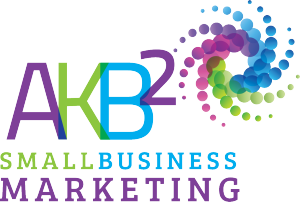In 2018 your small business future is video marketing and I have the stats to prove it.
Numbers just don’t lie.
82%
By 2021 online video will make up 82% of all consumer internet traffic
(Cisco)
1 minute
1 minute of video is worth 1.8 million words to a consumer
(Dr. James McQuivey, Forrester Research)
30+ Million
There are over 30 million total daily active YouTube users
(OmniCore)
100 Million Hours
100 million hours of video are watched daily on Facebook
(Wyzowl)
95%
Viewers retain 95% of a message when they watch it in a video
(Insivia)
53 X
You’re 53 times more likely to show up first on Google if you have a video on your website
(Forrester Research)
4X
4 times as many consumers would rather watch a video about a product than read about it
(Animoto)
51%
Mobile devices account for 51% of all videos played
(Smart Insights)
60%
60% website visitors will watch a video if one is available
(HubSpot)
Video marketing is proven online power and it’s great ROI for small business owners.
It gives your brand a voice which brings it to life. It makes it real and distinct.
Authentic, is how your audience would describe it.
It’s too bad that even in 2018, many business owners are still not seeing the value of video marketing and are unwilling to embrace the investment even though the evidence is overwhelming.
Since you are the exception and are convinced of the value of videos, here are some best practices:
- Plan and prepare
Before you dive into your video production first determine the goal. Why are you making this video? Who is the intended audience? What action do you want viewers to take? In other words, what is the Call to Action (CTA).
What results do you want? Ensure it ties back to your overall marketing goals and objectives.
- Keep your buyer in mind
As with your website or other marketing content, your goal is to speak to your audience. To have a conversation with them, establishing your expertise in solving their problems, addressing their pain and pointing them to the solution.
Videos can do this very well.
- Tell stories and make your audience the hero.
Place them squarely in the middle of the story and let them know how you rock their world by providing useful answers and insights they need. Show them how they can achieve success if they use your products or services.
As always, it’s about your buyer and not you.
- Grab attention in the first few seconds
Since it appears that our attention span is like a fruit fly these days, you have a few short seconds to spark curiosity and grab attention. Therefore, it is important that you get to the core of the message quickly – perhaps in the first 10 seconds or so. Consider a teaser or hook as a way to hold their attention.
Be sure to answer the ‘what’s in it for me’ question. Otherwise, your viewer simply doesn’t care.
- Make them bite size. Like tapas
Tapas are small, bite-size pieces of appetizers or snacks in Spanish cuisine. Usually delectable and tasty.
As with tapas, a good rule of thumb for online videos is to serve them up short and sweet.
A study conducted by Wistia (a US video software company), found a significant drop in video engagement once it progressed past 2 minutes. The ideal duration was found to be around the 2-minute mark.
Others have made the point that if you are selling a $20,000 service or product why wouldn’t you invest more than 2 minutes to learn all you can before investing that huge sum of money.
Different video formats, address different audience needs.
- Bring out the emotions
Emotionally connect with your viewers and make them feel something.
Make them laugh or cry. Even if your industry or area of expertise is unsexy think outside the box and create a video that’s neither boring or clinical.
Humour is always good, if you can pull it off well.
Storytelling is a great way to start.
What format is right for you?
Now that you are convinced online video is proven power, what’s next?
It’s time to decide the format you will use; there are three distinct video formats:
- Short
- Long-form
- Live
There is no right or wrong. They serve different purposes, so it’s up to you to decide which works best in helping you accomplish your marketing goals.
A combination of all three works, if that serves your marketing strategy best.
Let’s explore them briefly.
Short video
With short videos, you can highlight a topic or some other content you want to repurpose and get out there quickly. Highlights of a blog maybe.
As we have noted earlier, short and sweet (2 minutes or less) is great because there is a higher level of engagement, which means more viewers are likely to watch.
It also requires less resources of time and money.
It’s great for the small business owner who wants to jump in quickly to test the waters without a significant input of time or money.
Long-form video
Long-form video is usually described as a video with a longer duration for it’s typical distribution channel. Mind you, there is no universal rule that confers the designation of a long-form based on a specific duration, simply, an implied standard.
They can run from 8 minutes and up.
While long form videos require more time and money, the information can provide way more value, impact and engagement.
This type of video is useful as a how to, educational, explainer, story-telling, documentary and so on. The audience tends to be niche and wants comprehensive answers to key questions before taking the other step. They tend to be moving through the sales funnel and are less likely to be ‘tire-kickers’.
Long-form videos are also great for relationship building. Your audience gets to know you before you know them.
Call it the KLT factor.
Like. Know. Trust.
Live video
Back in April 2016, Facebook launched it’s Facebook Live: a live video streaming service that allowed users to broadcast straight from their mobile devices to their News Feed.
Facebook Live and other similar platforms like Periscope, YouTube. Twitter, Instagram, Twitch and other platforms have facilitated an immediate (live) connection between brands and followers.
Viewers love the immediacy, excitement and real-time connection.
For this reason, live video is outpacing traditional or static video at an exponential rate.
It’s surpassing traditional video, has 3 times the engagement and will become a $70.5 billion industry by 2021. (Neil Patel)
Here’s the deal, people of ALL ages are watching and creating live-streaming videos everyday.
So is your audience. The sea change is happening right now!
Landscape or Square video?
To answer this question, begin with your audience in mind. Where and how will your viewer consume your video – social feeds, blogs or your website?
A computer screen, a television screen or a smartphone?
If they are watching on a computer or television then landscape makes better sense.
If you plan to post to social media platforms including Facebook, Instagram, Twitter and Pinterest then square videos make better sense because they take up more screen space (up to 78%) and are better on mobile.
In a 2017 experiment conducted by Buffer and Animoto, they found that square videos outperformed landscape on social platforms for video views, engagement, shares and completion.
Bear in mind, that’s social platforms.
Landscape videos tend to perform better on other platforms other than social media like your website or blog since they are formatted for a landscape player.
To completely avoid this conundrum consider making both versions – a landscape video and a square video so if you want to share it on your blog it fits the landscape specs and if you want to share on your Facebook, it fits the square specs.
When to use videos in your marketing strategy
Now!
To get you started, I have compiled a list for inspiration.
By no means is this a comprehensive list – just a place to start and get ideas.
If you have other ideas or have used videos in other ways for your online marketing strategy, please share them with me.
Here goes:
- Welcome on a homepage
- Product or service information
- Explainer
- Case studies
- How To
- Feature guides
- Reviews
- Testimonials
- Blog tutorial
- Video email (personalized)
- Tip of the day
- Thank you to clients
- Back office show and tell
- Live Q & A’s
- FAQs
- Live stream from an event
- Sales, offers and discounts
- Products sneak peak
- Customer support
- Marketing campaigns
- Social media ads
- Bios
There you have it.
Marketing videos have proven to have online super powers and you should consider this as a serious contender in your overall marketing strategy.
If you are unsure how to make that happen, get help from a trusted marketing consultant.







